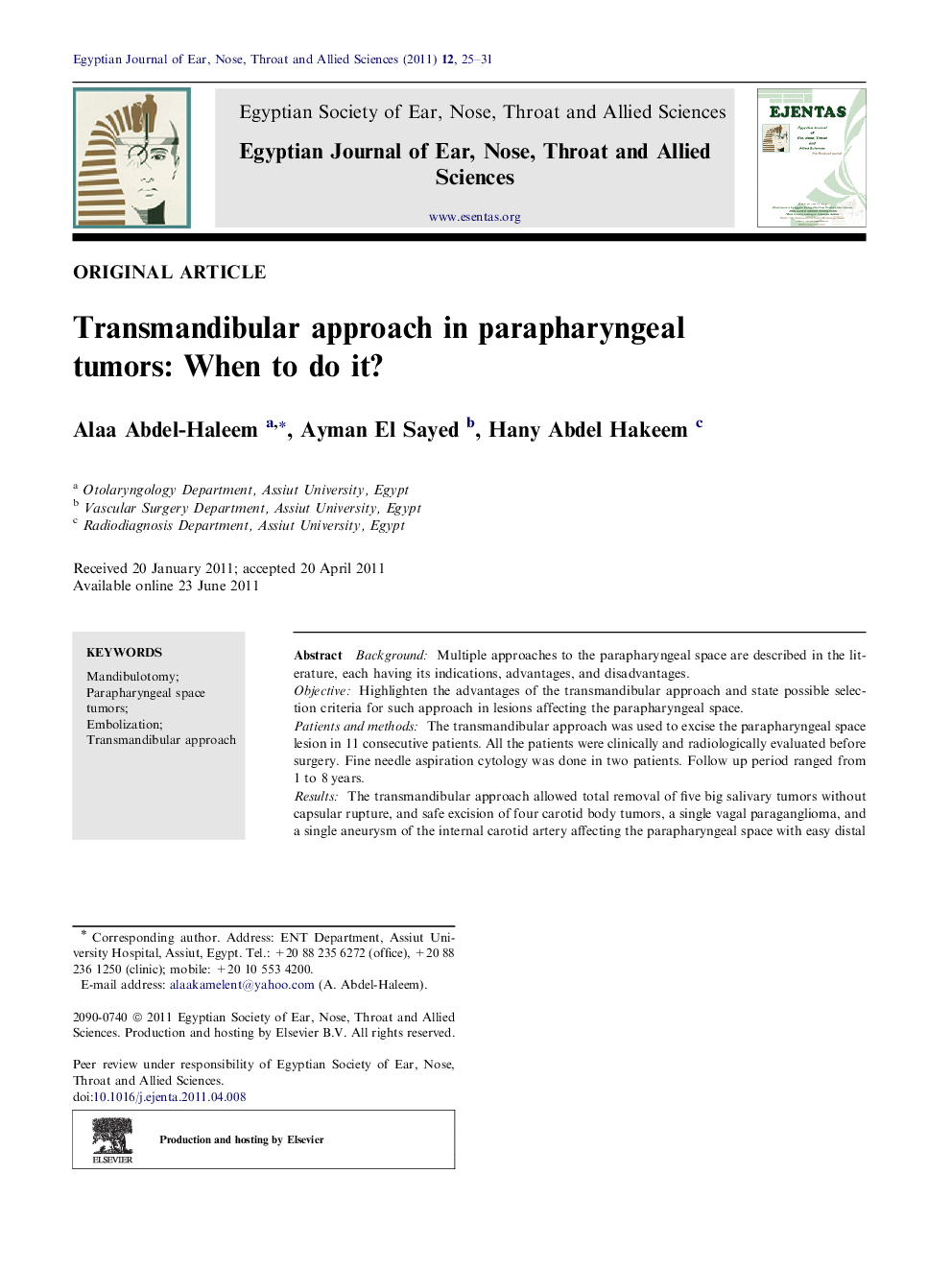| Article ID | Journal | Published Year | Pages | File Type |
|---|---|---|---|---|
| 4109062 | Egyptian Journal of Ear, Nose, Throat and Allied Sciences | 2011 | 7 Pages |
BackgroundMultiple approaches to the parapharyngeal space are described in the literature, each having its indications, advantages, and disadvantages.ObjectiveHighlighten the advantages of the transmandibular approach and state possible selection criteria for such approach in lesions affecting the parapharyngeal space.Patients and methodsThe transmandibular approach was used to excise the parapharyngeal space lesion in 11 consecutive patients. All the patients were clinically and radiologically evaluated before surgery. Fine needle aspiration cytology was done in two patients. Follow up period ranged from 1 to 8 years.ResultsThe transmandibular approach allowed total removal of five big salivary tumors without capsular rupture, and safe excision of four carotid body tumors, a single vagal paraganglioma, and a single aneurysm of the internal carotid artery affecting the parapharyngeal space with easy distal control of the internal carotid artery. Preoperative angioembolization limited blood loss during surgery for the vascular lesions. Patients were followed up for 1–8 years with no evidence of recurrence. Complications included plate infection in a single patient (9%), a single mortality, and cranial neuropathies in three patients which were not related to the approach. Ugly facial scars, lip hypoesthesia, dental losses, malocclusion, and temporomandibular joint pain or dysfunction were not reported.ConclusionThe transmandibular approach offers the widest access to the parapharyngeal space and allows safe complete excision of highly vascular and big swellings.
